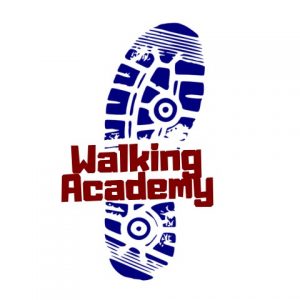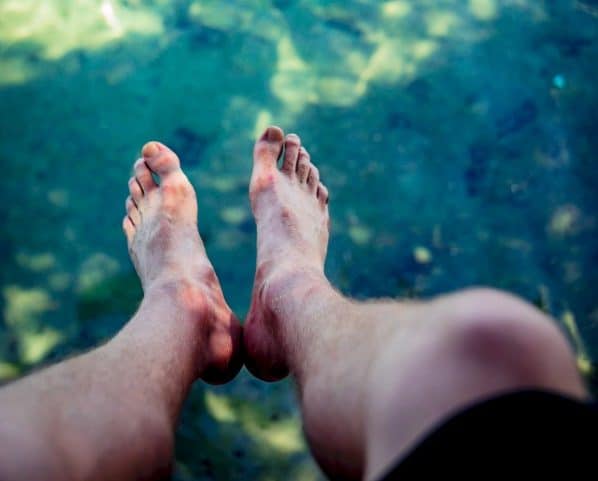Table of Contents
Some links on posts are affiliate links and will earn us a commission from qualifying purchases
We walk because we have to – for our health, our moods, our relationships with others – but also because it’s fun! Walking is one of life’s simple pleasures; why not do it in comfort?
When you take up hiking, one of the most common issues that hikers face is blisters. Blistering occurs because your shoes get wet and your socks don’t stay dry. Moreover, if you are not wearing the right type of shoes for hiking or walking on different surfaces, blisters can be a major problem for hikers.
Tips for preventing blisters
Obviously it’s much better to prevent blisters from appearing – here are some tips that will help you with this battle.
Wear shoes that fit well and are comfortable to avoid blisters
If you enjoy hiking, then chances are you’ve experienced the pain of blisters. Blisters can be a minor inconvenience or major injury, depending on how they form and which body part is affected. Often times, your shoes will fit too small and cause friction between your feet and insoles that lead to blisters. This is why it’s important to break in new shoes before hitting the trails by wearing them around for at least 3 hours each day over a 1-2 week period.
Shoes that rub certain areas of your feet or that cramp or squeeze your feet are uncomfortable, annoying, and sometimes painful. They might even cause injuries like blisters or bunions over time if they don’t fit well enough to support your feet properly with every step you take. So it’s important to take your time choosing the right shoe or boot, making sure that as far as possible they are the most comfortable fitting shoe you can get at that time.
If you buy leather boots or shoes to walk in, make sure you wear them through long, wet grass first, This will make the leather softer and shape to your feet better.
Choose the best socks you can afford
Don’t skimp on spending money when choosing socks. Yes, you can walk in any pair of socks, but spending a bit of money when buying socks to hike in could be the best investment you make.
You should select a non-cotton socks that wick away moisture when hiking. Typically good socks will be made out of natural materials – merino wool is often considered to be the best material.
If you know you’ll be doing a lot of miles, wearing two layer socks might help avoid blisters. One layer will soak up moisture and the other layer will give extra padding. Double layer socks are more expensive but may be worth it in the long run if they can prevent blisters from forming!
If you can’t afford decent double layered hiking socks, you may want to experiment by wearing 2 pairs of socks.
Best socks to prevent blisters when hiking
Some of the best brands to look out for are Bridgedale, Coolmax, 1000 mile, Runderwear and Kooogear.
Change your socks regularly to avoid blisters from moisture
It’s a simple fact that moisture is one of the main causes of blisters on your feet. Moisture can come from sweating in hot weather, or rain and snow when hiking; it doesn’t matter what caused them to get wet, but if they do then blisters may easily occur. The best thing to do is avoid getting socks moist with sweat at all costs!
If you are walking a fair distance you would be wise to carry a spare pair of socks in your rucksack. Rather than walk all the way in one pair which get wet with sweat, stop half-way to change into your spare pair and make the second half of your walk easier.
You can also use talcum powder in your socks and shoes to help soak up moisture. Don’t be afraid to carry some extra in your rucksack to re-apply half-way, especially if you are changing socks half-way – just make sure the lid is on properly otherwise you may have talcum powder everywhere when you open your rucksack.
Use a lubricant like Vaseline or petroleum jelly on your feet before you put on your socks
Before putting on your socks, use a lubricant such as Vaseline, which you rub all over your feet. You will not have as much friction and your skin will be less likely to get damaged. This is something that I prefer to do – I have long been an advocate of this, harking back to my teenage football days.
Can you keep walking with blisters?
Blisters are one of the most common hiking injuries. There is quite a bit of conflicting information out there on how to treat them, including whether or not you should walk with them or take time off from walking altogether. In this article, we will review some great tips and advice for parents concerned about blisters while their children hike.
How do you treat blisters that appear while walking?
Walking is a great way to stay fit and healthy. However, you are likely to get blisters after walking for long distances without taking the proper precautions outlined above. Even if you do, there’s no guarantee that they won’t appear. Blisters can be quite painful and can make it difficult for you to walk or even stand up straight.
So what should you do if they appear half-way round your walk? First of all, stop and acknowledge the fact, and then you need to decide what action to take. Continuing on through the pain can make your blister pop, which in turn opens up the chances of infection. Remove your footwear and socks to assess the situation. If your socks had become bunched up then they may have been the cause – straighten them out, or better still, change your socks to a spare pair.
Apply a blister pad or plaster – Compeed are widely acknowledged to be the brand to purchase. You’ll soon learn that these are an essential part of your hiking first aid kit. If you have existing blisters that are close to healing, it’s wise to apply these before setting off.
Adjust your laces
You can avoid blisters by tying your laces in a different way than usual. Watch this video to see how this is done.
Should you pop your blister?
It’s always best to protect your blister and let it heal naturally rather than popping it. If you pop your blister, as tempting as it is, then you run the risk of an infection forming. Blisters will generally heal over a few days, so it’s better to either stop hiking for a few days, or at least cushion them.
However, if you have a large blister that makes everyday walking painful due to the size of it, you may decide to pop it. If it’s very swollen and showing signs of discolouration – either yellow or green – seek medical advice first as it could well be infected already.
If you are going to pop it make sure you thoroughly wash your hands and then wash your foot, ideally with rubbing alcohol. Use this to also sterilise a needle that you will use to poke the edges of the blister in several places. Use some medical gauze to soak up the liquid that comes out, and then cover the blister with antibiotic ointment. Cover with a fresh piece of gauze that you can keep in place with medical tape.
After a few days the skin on the blister should die off and become hard. You can cut this away with sterilised nail scissors, then wash with rubbing alcohol and apply ointment before covering again until the skin underneath hardens.
Conclusion – How to prevent and treat blisters
I hope this article has helped you in the fight against blisters. As they can be so common and so painful to hikers, it’s best to do your utmost to prevent them, by following the points above. If however you find that blisters occur, you must protect them as best as possible till you get home and can clean them and rest before treating them.
Read More
When you first start to walk as a hobby or means of improving your fitness, you will obviously need a pair of walking shoes or boots. But which are better, leather walking boots or boots made from...
Choosing The Best Shoes And Boots For Walking - a complete guide
Before buying your next pair of walking shoes or boots check out this guide which will answer the questions you may have



